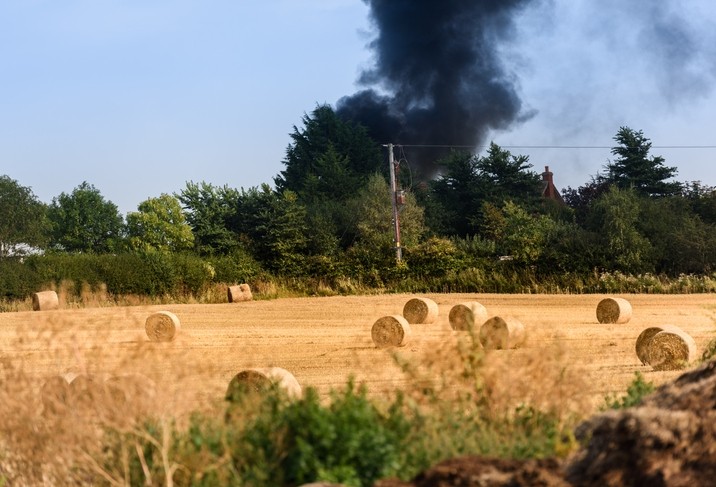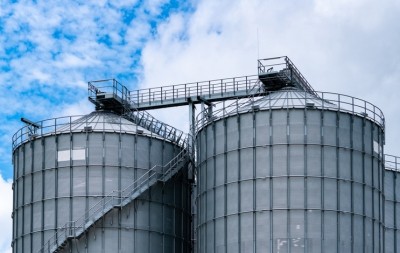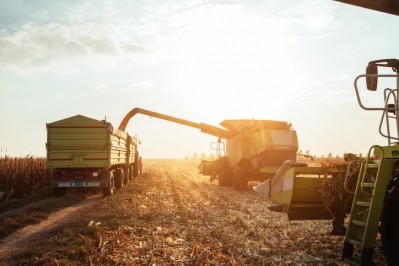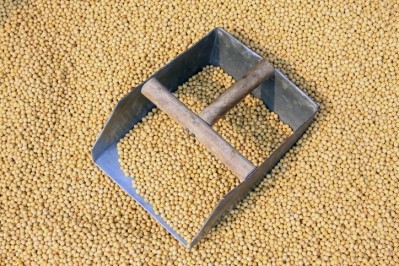Slow harvest leads to drying challenges, fire prevention focus

Following a slow harvest with delays related to wet weather, feed grain producers face the challenge of drying grain for storage, said Scott Sanford, an agricultural engineer with the University of Wisconsin-Madison Division of Extension. Little drying is expected in the field at this point.
“It would likely be best for growers to continue to harvest corn and soybeans as weather allows,” he told us. “However, there are some capacity issues at some co-ops as they aren’t accepting soybeans that need to be dried.”
“The cooler, wet growing season and the damp weather during the harvest season have kept soybeans from drying down in the field,” he added.
A two-year study conducted at the University of Wisconsin found that leaving corn standing in the field tends to increase the amount lost when the feed grain is harvested and dried. Yield loss can climb from a 3-5% loss in November to 22% in December.
“Field losses increase dramatically in December and beyond,” Sanford said. “This can be weather-related, [from] disease pressure, and wildlife damage.”
Corn intended for use in animal feed can be managed in bags or silos as high-moisture corn – but it needs to be used before warm weather arrives in the spring, he said.
Grain drying
“If you have enough aeration and the grain temperature is reduced to under 40F, it should be fine,” Sanford said of challenges producers face with drying. “If not, mold and heating and potentially fires can be an issue.”
“Aeration should be run continuously until the grain is dried down to a safe storage level,” he added.
Making sure that dryer sensors are correctly calibrated and keeping screens clean can help reduce costs, as will in-bin cooling, Sanford said. “In-bin cooling is a method that increases the capacity of a grain dryer and can reduce drying costs by about 15%,” he added.
“The grain is transferred hot to a storage bin about 1 to 1.5% points above the desired storage moisture content and then dried with ambient air,” he said.
Dryer fires
This year a number of fires have been reported across the US Midwest and in parts of Canada including Saskatchewan.
Incidents range from fires in on-farm dryers where relatively small amounts of grain were burned to an incident reported by the Fond Du Lac County Sheriff’s office at a dairy in Alto, Wisconsin where there was more than $200,000 in damage, due to corn losses and the fact the dryer were destroyed.
It is not unexpected to have more fires in feed grain dryers during harvest, said Sanford. However, preventive steps, like continuing daily maintenance and screening grain before starting the drying process, can help reduce the risk of fire.
“It is usually bees wings from the kernel that build up someplace in the dryer and then get too hot and combust,” he said. “It’s a maintenance issue to some extent.”
Bees wings are detritus on a kernel of corn that bind the kernel to the ear of corn and can come off at harvest or during the drying process.












